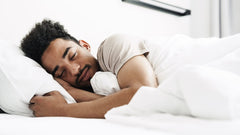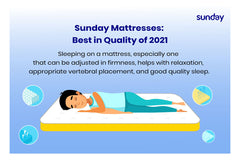 By Shveta Bhagat
By Shveta Bhagat 3 Comments
3 Comments
Sleep is the course in which animals and humans rest at regular intervals, with lesser or greater degrees of decreased responsiveness to the nearby world or unconsciousness. Sleep occurs like clockwork, approximately every 24 hours even though the regular human internal body clock typically runs a 24.5-25.5 hour cycle. This series gets rearranged each day (to match 24 hours) with a range of stimuli like sunlight. One of this cycle correlates with the level of melatonin, which is at times high when we tend to sleep.
As we sleep we pass through a series of stages. What enabled scientists to study sleep was the discovery of electroencephalograph (EEG).
Eugene Aserinsky, a graduate student, during the 1950s used this device to find out REM sleep.
Sleep can be classified into two categories:
1. NREM (Non-Rapid Eye Movement) Sleep (in other words, quiet sleep)
2. REM (Rapid Eye Movement) Sleep, (active sleep or paradoxical sleep)
You are still comparatively aware and conscious all through the initial phases of sleep. Beta waves are produced by the brain, which are fast and small.
The Stages of Sleep
Alpha waves, which are slower waves, are produced when the brain starts to relax and slow down. You may experience particularly vivid and weird feelings called hypnagogic hallucinations during this time when you are not quite asleep. You may feel like you are falling, which is a common example of this phenomenon.
There is a REM stage of sleep and 3 NREM stages.
NREM Stage 1
Stage 1 is the start of the sleep cycle, and is a comparatively light stage of sleep. Stage 1 is a changing stage between wakefulness and sleep.
In Stage 1, very slow brain waves are produced by the brain known as high range theta waves.
This phase will not last more than 10 minutes. During this stage if you awaken someone, they might report that they were not really asleep.
NREM Stage 2
The awareness of the surroundings will be less
There will be drop in body temperature
There will be more consistent heart rate and breathing
For around 20 minutes Stage 2 sleep will last. A rhythmic brain wave activity called sleep spindles is produced by the brain. Heart rate begins to slow and body temperature starts to come down. In this stage people spend about 50 percent of their total sleep, according to the American Sleep Foundation.
NREM Stage 3
>Muscles loosen up
> Breathing rate and blood pressure drop
>Experience deep sleep
People may not respond to what is happening around them during this stage as they become less responsive to noises. It also acts as a midway between a light sleep and a very deep sleep.
Earlier, studies claimed that it was during this deep stage of sleep that bed-wetting mostly happened. However, according to recent studies at other stages also bed-wetting can happen. Sleepwalking also tends to happen during this deep sleep stage.
REM sleep:
>More active brain functionDuring rapid eye movement (REM) sleep most dreaming occurs. It is sleep’s Stage 4. REM sleep is characterized by eye movement, increased brain activity and respiration rate. People spend roughly 20 percent of their total sleep in this stage, according to the American Sleep Foundation.
Sleep Stages and their sequences
Sleep can progress from stage 1 to 3. But stage 2 sleep happens again after stage 3 sleep, before REM sleep. Throughout the night sleep cycles vacillate through these stages.
We enter the REM stage, on an average, almost 1 1/2 hours after we fall asleep. REM sleep’s first cycle might be short, but as sleep progresses each cycle becomes longer.
In most stages, the brain is quite active even though sleeping is considered to be a passive activity. Mattress can also disturb your sleep. So select the best mattress to get healthy sleep

Sleeping position in Islam Sleep science has been gradually building momentum over the past couple...

Mattresses are known to improve sleeping postures and circulation, which is essential for a healthy...

Everyone looks for comfort when it comes to sleeping and relaxing. And mattresses play a...

Choosing the correct type of mattress is the first step if you want a luxurious...

The world of mattress sizes can get your mind out of whack if not adequately...
Still confused? Call us on 080 4749 4649


Comments
In one of the first studies to examine how room temperature impacts people with sleep apnea — a condition that affects an estimated 18 million or more Americans — researchers discovered that when the thermostat was set at 61 degrees instead of 75, subjects slept on average 30 minutes longer and reported feeling significantly more alert the next morning. —Jihan Thompson
Super article.
Excellent article about sleep